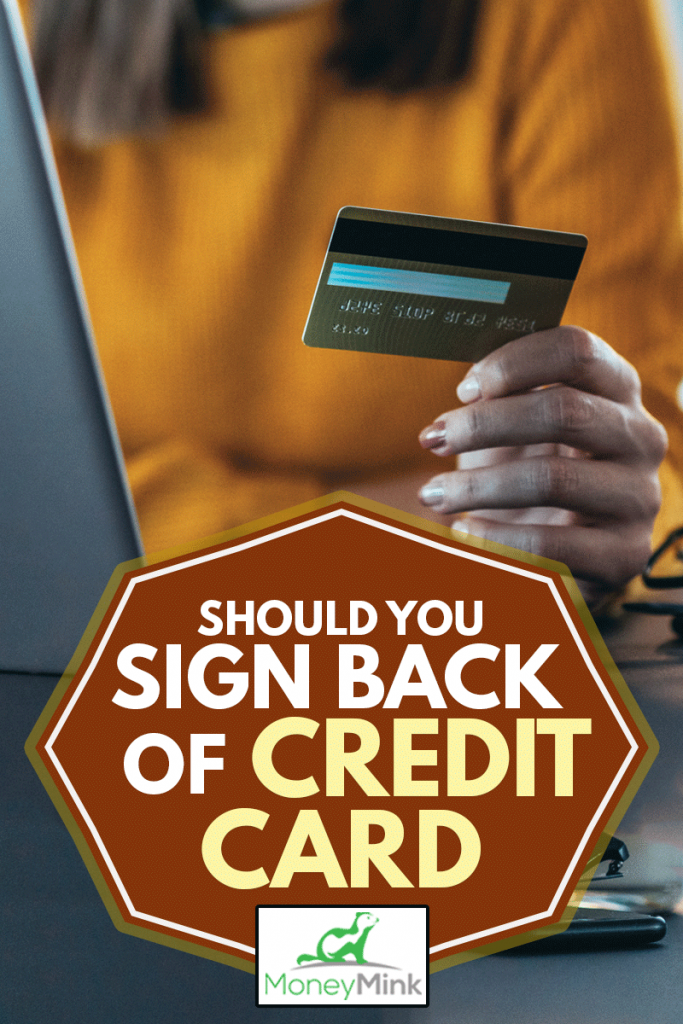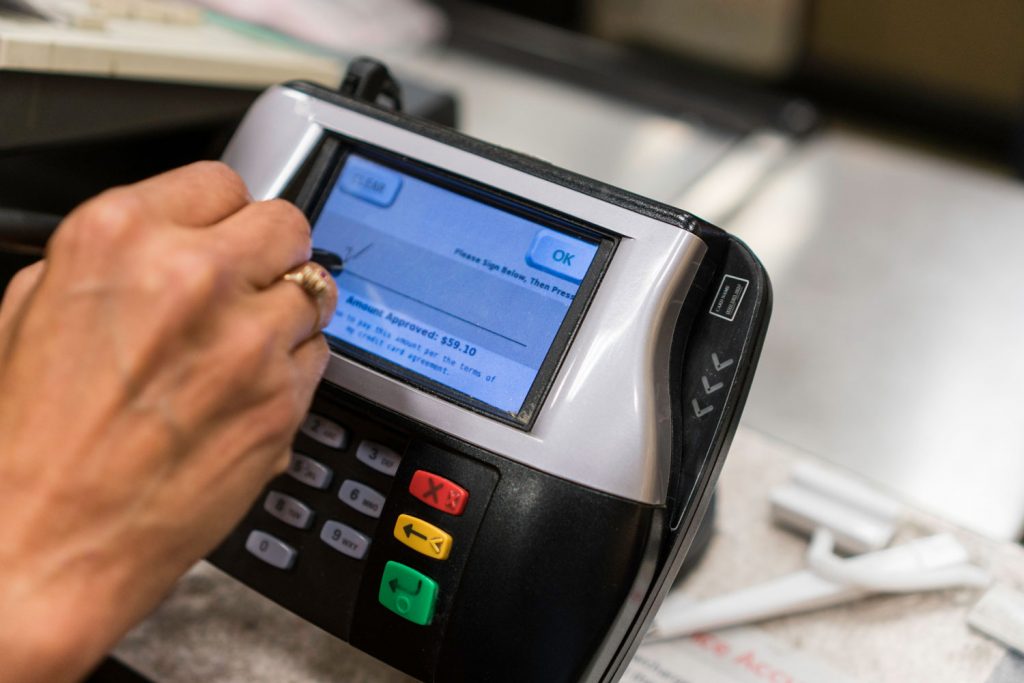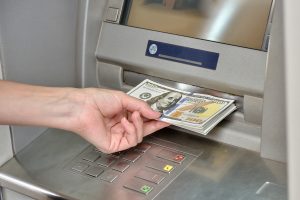Using a credit card or bank-issued debit card carries with it much responsibility. You are legally responsible for any and all charges and debit made to the card issued in your name. You will be held accountable by the issuing financial institution for any default in payments. With this responsibility all yours, why would you open yourself up to someone who can more easily use your card without your permission? In this post, we discuss at length why you should always sign the back of your credit card.
For those of you that might not have any banking experience, you should always sign the back of your credit card. Sign your name exactly as it appears on the front of the card so that it will match. Your legal signature on the card will help protect you from unauthorized purchases should the card ever leave your possession.
Now that you know that you should always sign the back of your credit card or bank card, you might be interested in knowing more about the pros and cons of doing so. We researched credit and debit cards from numerous financial sources and have presented our findings in this post. If you've ever wondered what you should sign your card with, or if you need to sign a receipt, this post will thoroughly answer your questions. To see what we've discovered about signing credit cards, please keep reading.

The pros and cons of signing a credit card
There are certainly more pros to signing the back of your credit or bank cards than there are cons. In this section of the post, we'll discuss what our research has shown us regarding both.
Pro
The biggest reason you should always sign the back of your credit card or bank card is to help deter unauthorized usage of the card. If you have signed the back of your card, that signature should match the signature on the sales credit receipt you sign after a purchase. If you ever have your credit card stolen and used by someone illegally, it's much easier to contest the card's fraudulent charges by showing that the signatures do not match.
Should you neglect to sign the back of your card and it falls into the wrong hands, the thief can sign your name to the back of your card. This signature will match the signature on the receipts, making theft more difficult to prove.
Many credit and bank card issuers insist that the merchants who accept their cards deny any transaction that does not have a signature on the back. So if you were to try to use your own card without your legal signature, then you could be denied the purchase on site. This would be a little embarrassing.
Con
Realistically, the only downside to signing the back of your credit card is that someone could obtain access to your signature. If your card is stolen, the thief would know exactly what your signature looks like and could figure out a way to forge it.
Many consumers have taken to signing their cards and writing in "See Photo ID" above their signature. If your card is stolen, this should act as an additional measure. Not only do the signatures have to match, but a valid ID would have to be presented.
What should you sign your credit card with?
We've seen examples of the various writing instruments that people sign the back of their credit and bank cards with. From markers to pencils to crayons, it seems like some folks just grab whatever is handy when they need to sign their name.
Remember that signing the back of your card is like signing a legal document and should be treated as such. You'll want to use a good black or blue pen when signing, and nothing else. Be sure you have one that won't smudge or smear so that your legal signature is clear and readable.
To see this brand of Cross pen on Amazon, click here.
What happens if you don't sign the back of your card?
Credit card companies and banks want you to sign the back of the cards that they issue for two very good reasons. Signing the card signifies that you accept the terms of the card when you use it and accept the financial responsibility of paying any debt associated with the card. It shows the entity accepting the card as payment that you have agreed to do so and will not default.
Card issuers also want you to sign the back of your card for the sake of your own security. An unsigned card that falls into someone else's hands spells trouble for the rightful owner. They can sign your name on the back of the card, and then the signature will be a match to the one that they would then sign on sales credit receipts.
For these reasons, it is strongly recommended always to sign the back of your credit and bank cards the very moment that you have the card in your possession.
Do credit card companies require signatures?
All credit card companies require a signature, but that doesn't mean that consumers aren't able to use cards without one. Even though merchants are trained to always deny cards without a signature, it doesn't mean that they always pay attention. In a perfect world, all of the safety precautions would totally eliminate credit card fraud. Sadly, this would require that all players follow the guidelines, and many times they do not.
By requiring that your cards are signed, the credit card company sees that you acknowledge their terms of service for using the card for purchases and cash advances and accept the financial responsibility of repaying them.

Do you need to sign a receipt?
Signing receipts are just as important as signing the back of your credit cards and bank cards. The signatures on the back of the card and on the receipts should match. If they don't, it signals to the merchant that the card's user is not the person to whom it was legally issued. By signing both the card and the receipt, you protect yourself from fraud.

Does the US have chip-and-PIN?
Thankfully, technology has evolved in such a way that more firewalls have been put into place to deter fraudulent credit card and bank card transactions. In the United States, you have various credit and bank card issuers that have implemented the chip and PIN system.
Cards with this technology have a microchip embedded onto the card's front surface, which contains your personal information. When the card is inserted into the credit card terminal, this chip will prompt the user to enter a personal identification number into a keypad. If the number does not match what the microchip has stored, the transaction will be declined.
These extra layers of security will make credit card fraud much more difficult. Even if the thief has access to your card and your signature, they won't have your PIN. For obvious reasons, credit and bank card issuers strongly advise that you never give your PIN to anyone, and be sure not to use one that could be easily guessed.
The following credit card companies offer cards with chip and PIN technology:
- Visa Signature Flagship Rewards Card
- AAdvantage Aviator Red World Elite Mastercard
- PenFed Power Cash Rewards VISA Signature Card
- BankAmericard Travel Rewards
- Diners Club Card Premiere
- Wyndham Rewards Visa Card
- Priceline Rewards Visa from Barclays
- Hawaiian Airlines World Elite MasterCard
- USAA Preferred Cash Rewards Visa Signature Card
- Sam’s Club MasterCard
- U.S. Bank FlexPerks Select+ American Express Card
- Fargo Advisors Premium Rewards Visa Signature Card
To view this credit card wallet on Amazon, click here.
In conclusion
In this post, we learned that credit card and bank card issuers require cardholders to sign the back of their cards. They require this to protect the cardholder from unauthorized usage. There are a good deal more pros to signing your credit or bank card than cons. Adding "See Photo ID" to the signature line will add an extra layer of protection.
Not only do credit card companies require signatures on the back of your cards, but they also require signatures on the sales credit receipts. New technology gives even more protection to credit cardholders, in the form of chip and PIN. Multiple credit card issuers have employed this new development, and many more are looking to add it to their issued cards soon.
If you found this post on credit cards to be helpful, we believe you'll find the following financial posts to be informative:
What Does Endorsing a Check Mean?





